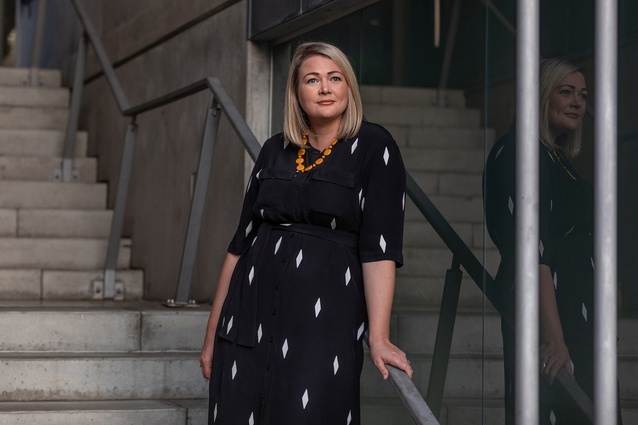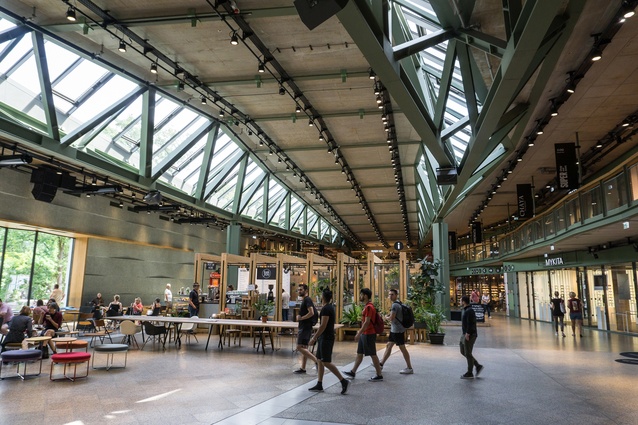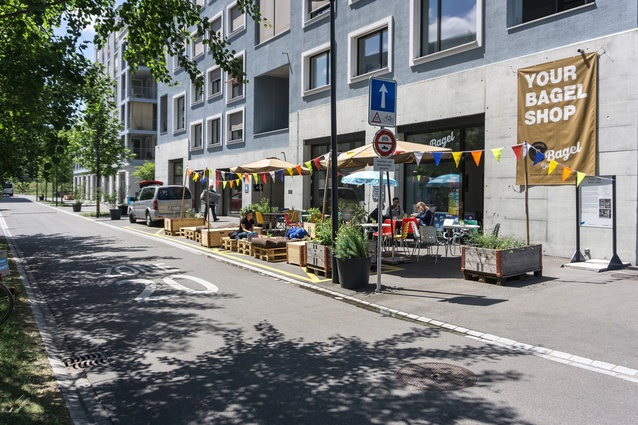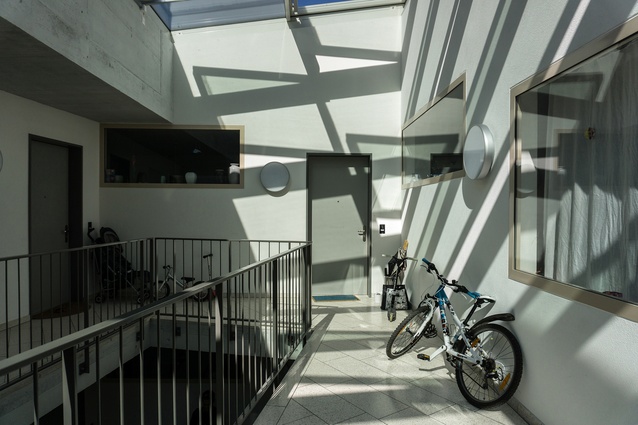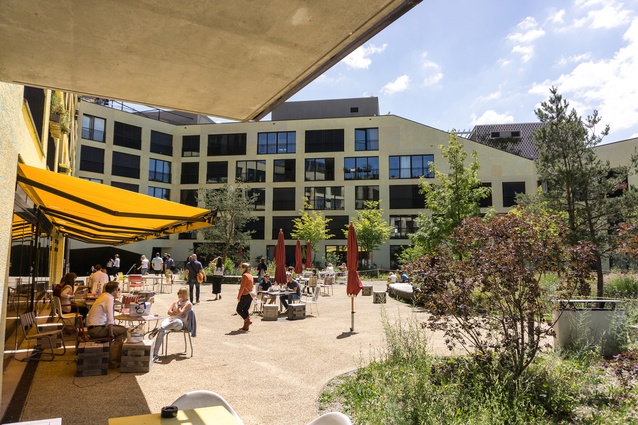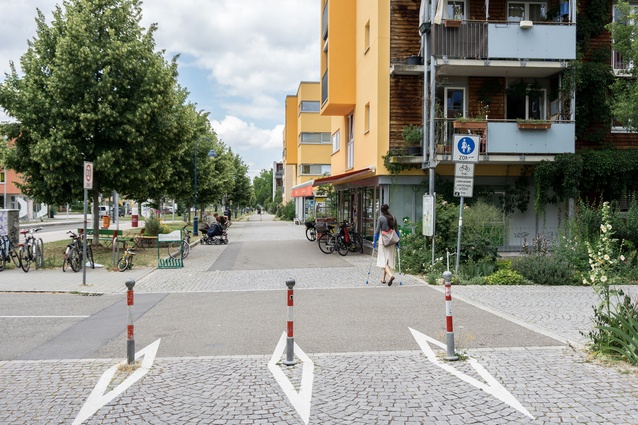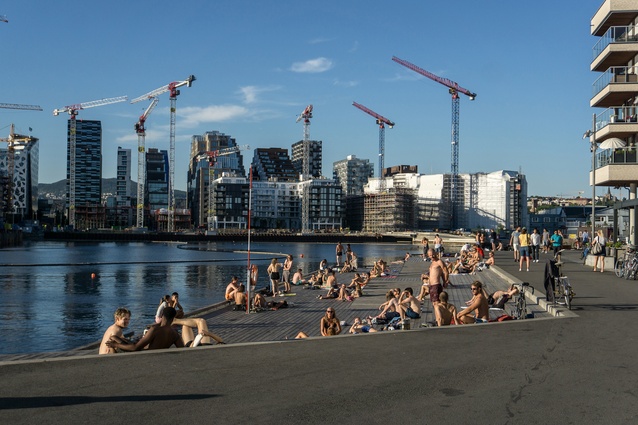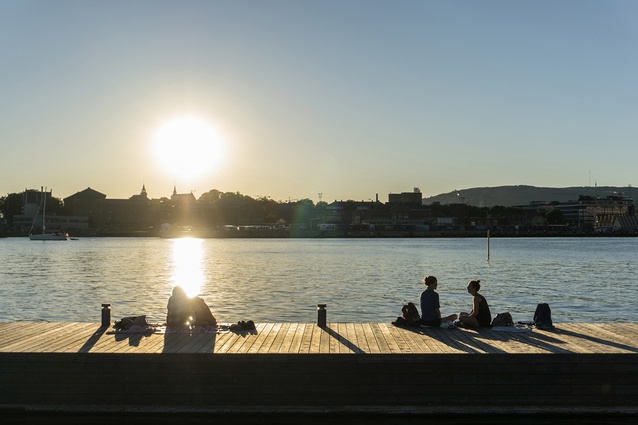Wins and losses: Natalie Allen
Dr Natalie Allen wears many hats: researcher, entrepreneur and urban strategist, to name a few. After graduating with a PhD in urban design from the University of Auckland in 2016, Natalie set up a firm called The Urban Advisory and set out on a mission to create better neighbourhoods for the common good.
She caught up with Ashley Cusick and talked about urban solutions, running a business, forging a path and the common thread that runs through it all – a passion for people.
Ashley Cusick (AC): What pushed you to pursue your PhD in urban design after completing your Bachelors and Masters in architecture?
Natallie Allen (NA): When I was doing my Master of Architecture, I was looking at professional ethics across the disciplines. Do we, as a built environment profession, serve the client or society? It was a really interesting topic, and I did get the option to pursue it as a PhD. But, that triggered me to ask the question, what do I want to be a specialist in? What do I want my niche to be?
Through thinking about that, I realised that I couldn’t understand why we weren’t focused on delivering whole neighbourhoods when we were creating housing. And, when we thought about neighbourhoods, we weren’t starting to unpack the intricacies of how all the elements – housing, urban amenities, infrastructure, et cetera – were actually interwoven.
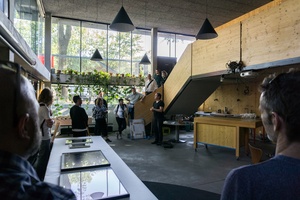
It really came out of the fact that I wanted to do good things and, from what I’d experienced of the profession so far, I didn’t feel like I would get in the room for another decade to actually have those significant conversations.
For me, the PhD was somewhat of a means to an end to be able to get a foot in the door and actually influence and shift conversations within the profession. I’m not entirely sure how I thought that would all work out, but sometimes you just need blind faith.
AC: Did you ever plan on going in to traditional architecture practice?
NA: Absolutely. In fact, I was planning on going into traditional practice even after I finished my PhD. I absolutely love teaching and being involved at the university, but I never saw myself as a career academic. I really like the practical side of the profession. It was actually while I was in the process of looking for jobs and speaking with people that I slowly started realising that I was becoming disillusioned with the process of being a graduate architect and spending years slogging in the background before you could actually have any say.
Before starting The Urban Advisory, I ran a photography business for six years, which is how I financially supported myself through university. I’d also freelanced doing architectural drafting. I never thought of myself as entrepreneurial, I just liked doing lots of things. Therefore, I didn’t necessarily think that a traditional job was a good fit for me.
It’s a sign – in my mind – of how our whole approach to work is changing dramatically. For many people, it’s no longer a linear career path like it used to be. It’s much more dynamic than that. There are many graduates who have really diverse interests and they do a lot of other things, and they can bring all that into whatever role they create.
AC: It does seem like more people are going out and doing their own thing.
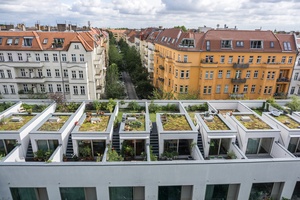
NA: I think whatever you’re doing as a built environment professional, you can forge your own path, for a start. But, I also think the big commonality, no matter what you do, is you have to really care deeply about people. At the end of the day, that’s what our built environments are for. It’s for all of us to coexist in space. No matter how complex we might feel it is, that’s how the profession can come together.
AC: With The Urban Advisory, you work with a diverse group of clients. Have you seen a shift more towards a human-centred approach to urban design? Are there areas of property development that need improvement in that regard?
NA: A lot of developers have very important economic imperatives because they are taking significant financial risks, and that risk cannot be discounted. It’s a big deal to put millions of dollars on the line for a new development. However, we’re seeing more savvy developers realising the inherent value of putting people first, not only for their sales, but also for their brand and their ongoing ability to be known as a great developer.
I think the bigger issue is that we need to think of it as a whole system. Developers are a key part of it. Designers are also a key part of it. Also, you’ve got lawyers, financiers, all kinds of different designers: landscape architects, interior architects, urban designers. You’ve got all the different engineering disciplines that come together on a project. You’ve got services – so incredibly important – who often don’t get around the table until the very end.
It’s problematic to put too much onus on any one profession in terms of if they are ethically delivering. That’s where I see the niche of urban strategists: being the brokers to get everybody around the table up front and have a really clear vision.
AC: Tell us a little bit about how The Urban Advisory came about.

NA: It came out of my insatiable need to always say yes to things, and my belief that somehow that will always work out. There was an email sent around to our faculty inviting architecture and urban design students to the faculty of geography student presentations about housing related issues. I went along and they were surprised because no one from the architecture and urban planning faculties or staff had responded to their invitation. As a result, I was easy to remember.
The organiser of that was Karen Witten. She was the one who gave me my start because there was a research contract that she didn’t have time to do. That became a six-month contract and then I started looking around and applying for other contracts. I kept going to events and meeting people, initially purely as a learning exercise because I’m interested in everything, and things started to snowball.
Then through a mutual friend, I met my business partner Greer. She had just moved to Auckland so I thought I should take the opportunity to show her some great spots and talk all about the city. We absolutely clicked in the way that we thought about urban environments, which I think is fascinating because her background is in law and the procurement of social infrastructure projects. But, like I said at the beginning, we both cared deeply about people and outcomes.
AC: What exactly do you do at The Urban Advisory, and what are you working on at the moment?
NA: We call ourselves an urban innovation studio. Primarily what we do is urban strategy. What that means in that we work across different scales with really diverse groups to figure out a way to solve problems. It’s really delivery focused, as opposed to the idea of strategy that some people have that it’s just about thinking. For us it is about, yes thinking – because we want to do difficult things – but we are also set on pulling things off.
At a government scale, for example, we were doing some work on the regeneration strategy of Christchurch: how to move beyond regeneration to everyday city making. Then, at a more medium scale, we were working with a developer doing design review and integrated neighbourhood strategy: how do they move beyond thinking of delivering houses to thinking of whole neighbourhoods, and thinking of what’s the right mix of urban amenities that they could deliver there. Then helping them find delivery partners, actually brokering the deals around how to get all these great ideas delivered.
At the smaller end of the spectrum, we’re working with a group in Katikati, who are private individuals, to deliver New Zealand’s first property cooperative. We’re really interested in alternative development models, and we’re working with a group to set up an incorporated society to promote all these different models as a way to offer something different to the market and to complement what’s already happening. We know that what we’re currently doing is not enough. If it were, New Zealand wouldn’t have such incredible issues with housing affordability and equity.
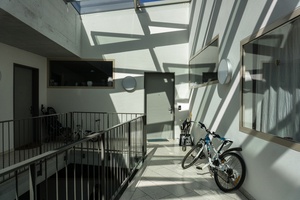
Finally, because we’re a business that believes in urban innovation, we have to walk the talk, which means we have to be researching and creating primary data. Part of that is going overseas and seeing best practice, amalgamating it all and disseminating it to our clients. So, part of our business plan is to go every two years and do a reasonably large overseas trip. We will go to a whole lot of different cities and we’ll do really targeted, on the ground, action-based research.
Last year we spent a month on a study tour to seven European cities, visiting two to three neighbourhoods in each city and a total of about 28 case study projects. For two of these weeks we also met up with the City Maker’s Guild, a collective of passionate urbanists, to learn about collaborative urbanism. During this time we met with city officials and planners, developers, bankers, residents, designers, the whole range of different groups.
We went to all different types of projects: co-housing projects, Baugruppen projects, cooperative projects, property collectives and more. We were looking for commonalities and differences and learnings we could bring back here and ways that we could reinterpret what we were seeing in a way that we thought was a good fit with our clients back home.
AC: Obviously context is different for every place, every city and every neighbourhood. How much does that tweak your approach, if at all?
NA: Through research that we’ve done, we have developed a methodology for how you can take either a greenfield or a brownfield site and step through all the different options for how to be more innovative. We incorporate regenerative design principles; we focus on wellbeing; we think about how to create smart cities, et cetera.
In saying that, I really love the fact that what we do is always a little bit different. That’s what drew me to architecture in the first place. Every day is a new blank sheet of paper, in a way, but you take your skills and all your learnings into that process. I think urban strategy is very much the same. To stay fresh and current, you need to make sure you’re researching a lot and have an evidence base, but you also need to be constantly prepared to crumple up the piece of paper and start again.
AC: What challenges have you faced with setting up a company like this and trying to reach the goals you have for this business?
NA: There have definitely been challenges, which I think is part of the process of doing anything new or different. One for us has been getting people to understand the value of urban strategy and the fact that it’s more than thinking; it’s about actually doing. Potentially doing things in a different way, but one that can lead to a really great outcome. Taking people on that journey has been a challenge, but it also encourages us to think about our messaging and how we communicate with clients.
Also, getting people to understand that we are about working with them and not competing against them. We see very tangible ways that we can assist architecture firms, engineering firms and developers with what they’re offering. We’re tackling that firm by firm, doing lots of presentations and talks and info evenings. Getting a broader buy-in about the value that can be added by taking this whole-systems approach – and what that actually means at a more granular level of delivering the project – is something that we’re still working on.
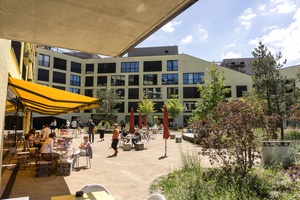
We’re also both relatively young women in a traditionally male-dominated field. At times, that has been more noticeably challenging than we first anticipated. It is interesting because neither Greer nor I really had the mindset that it would be an issue. It’s been quite a learning curve in some instances to realise that the reason why a meeting is going a certain way is probably down to that fact.
AC: How do you think increased diversity in the field would affect urbanism?
NA: On one level, I think we’re going to find out because it’s very much happening. That’s exciting. What’s really interesting is that as we get more diversity of all kinds, we appear to get a much better embracing of complexity. If you get any one type of group in a room, they always try and make sense of something in a particular way. Whereas, when you do get broad perspectives you often get broad solutions.
We’ve all reached the understanding that we do need new solutions, and not every existing process is a useful one for having great outcomes for people. It’s not necessarily a hard sell, even for people that are particularly attached to a process. The more of any group we have – women, mana whenua, et cetera – the more things will shift.
It comes back to the whole idea of collaboration. If we are truly collaborative, it doesn’t mean that it is going to be a slow, laborious process.
AC: And how do you see technology affecting urban outcomes?
NA: That’s where the relationship between issues such as women in urbanism – or any group in urbanism – and outcomes and changing the way we do things can come together, through technology. We’re constantly looking for efficiencies and technology can give us these, even in the way we collaborate. It’s something that I don’t think is explored enough yet.
I think that technology is actually going to enable us to have efficient, truly civic-centric planning and design that we’ve never really been able to have in the same way before. That’s a space that we’re really excited about working in – this idea of redefining engagement and what that might look like. That is where it brings together that whole diversity conversation.
AC: What do you think are some practical steps that we can take towards better cities?

NA: The first fundamental thing is a mindset shift. That will actually lead to different outcomes. That’s around this whole integrated-system, long-term view approach. Understanding that issues like housing, productivity and the future of work are all interrelated. You can’t solve one without the other. For too long we’ve been focusing on individual issues, one at a time, hoping that if we gave it enough attention, it would magically happen. We have to think of all these things like an ecosystem.
And, the bigger shift we must have is around how we move to a whole integrated model of working together. I would love the opportunity to figure out the nuts and bolts, but at the moment, we’re doing a lot more work on just winning hearts and minds to the idea that taking a whole-systems approach will inevitably lead to better outcomes. A big part of that is balancing the four sustainabilities: economic, environmental, social and cultural.
What we’re realising now is that it doesn’t have to be one or the other . Yes, we make trade offs in any process, but we can get outcomes that have a combination of all factors, so that it’s not just winners and losers. We can all win at some things and, even though we might lose at some things, the whole trade off process means we’re better off than we would have been – both individually and collectively – than if we hadn’t actually negotiated at all.
AC: Do you get a lot of push back on these ideas?
NA: All the time, but you just have to stay relentlessly optimistic. We have this whole suite of tools we can use to create better outcomes: from tweaking the way our body corporates work to allow for different housing models to bettering our understanding of trade offs in a neighbourhood context. We just don’t realise how fantastic a city we could build if we just thought a lot more about which tools to use. Maybe that’s the best way to describe this whole idea of urban strategy: yes, we want to pause and think about which tools are appropriate, but that’s because we want to, with incredible precision, create something that’s beautiful and beneficial for people.
I say I’m an optimistic realist. It sounds aspirational, but it’s actually very practical.
Find out more about Natalie’s work at theurbanadvisory.com.

